Meet Lt. Cmdr. Ike, the young seadog on a mission to keep the navy blues at bay: Three-year-old therapy yellow Labrador delivers morale-boosting cuddles on Britain’s biggest aircraft carrier while it sails off the east coast
Lt. Cmdr. Ike has received orders for a week-long deployment aboard HMS Prince of Wales, Britain’s largest aircraft carrier.
He is charged with maintaining the well-being of the sailors on board and reducing stress among the crew.
But first he wants a belly massage.
The sailors gathered for their seamanship training are only too happy to help, because Ike is a yellow Labrador, part of a US pilot program that sends therapy dogs on board.
The honorary lieutenant commander is in his element as the center of attention, rolling on his back and letting his tongue hang out of his mouth.
A seamanship class aboard the Royal Navy’s HMS Prince of Wales pauses as crew members pet Ike, a therapy dog and honorary lieutenant commander in the U.S. Navy
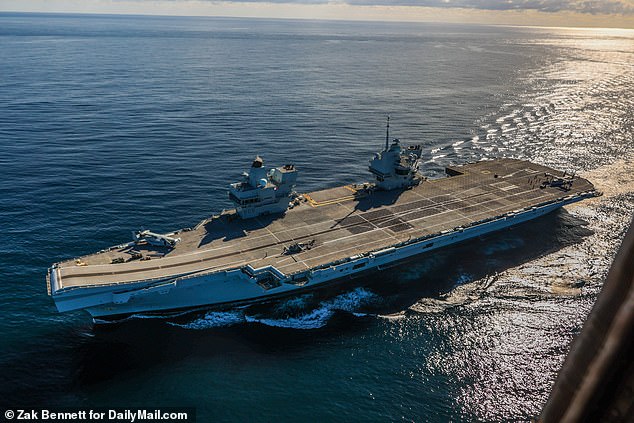
HMS Prince of Wales sails off the coast of Virginia and North Carolina as it prepares to take over ‘very high readiness’ duty for Britain
He looks all around the world as if he was born to be a seal.
“He is an ambassador for joy and empowerment,” says handler Melanie Hennis.
Behind her, the seamanship class – today’s lesson is how to properly raise and lower flags – has come to a standstill. Some burly sailors sit on their knees, the better to pet Ike.
It brings the Royal Navy’s relationship with animals full circle.
For centuries, warships carried pets and mascots. There is a famous photo of British war leader Winston Churchill meeting a black cat aboard the sixth HMS Prince of Wales that bears the name.
Cats were a good way to keep mice and rats at bay.
And ships sometimes picked up more exotic mascots during their voyages, such as the jaguar presented to HMS Jaguar during a port visit in Rio de Janeiro, or the polar bear rescued by a cruiser during World War II.
But that came to an end in 1975 when they were banned due to health and safety concerns and fears that they could bring rabies on board.
Join the U.S. Navy’s Expanded Operational Stress Control dog pilot program, exploring how a therapy dog can help with the stress and emotional challenges sailors face while away from home for months on end.
The dogs are trained for two and a half years by Mutts with a Mission.
Ike’s usual station is aboard the USS Wasp, an amphibious assault ship, but the three-year-old will remain with the British sailors until their stay on the US east coast ends early next month.
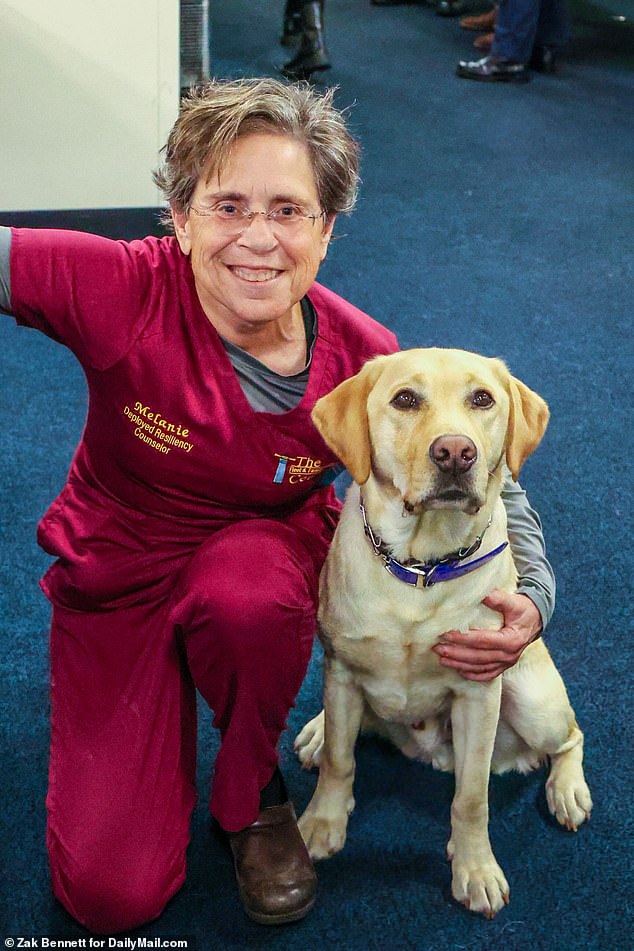
Ike with his handler Melanie Hennis last week. They have both become favorites on board
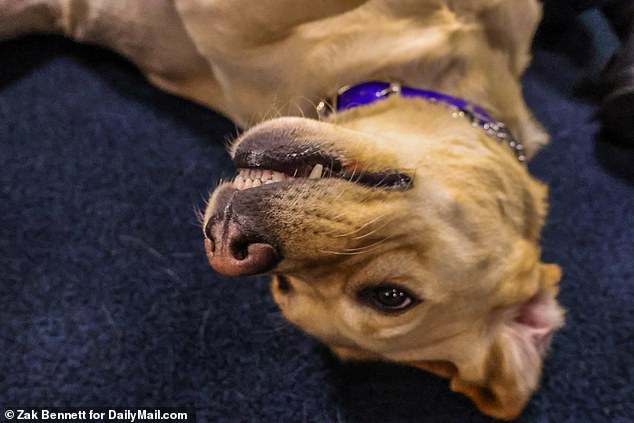
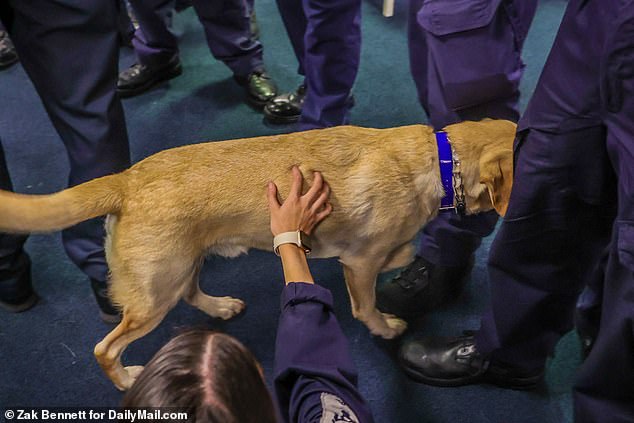
There’s always a crowd when Ike shows up
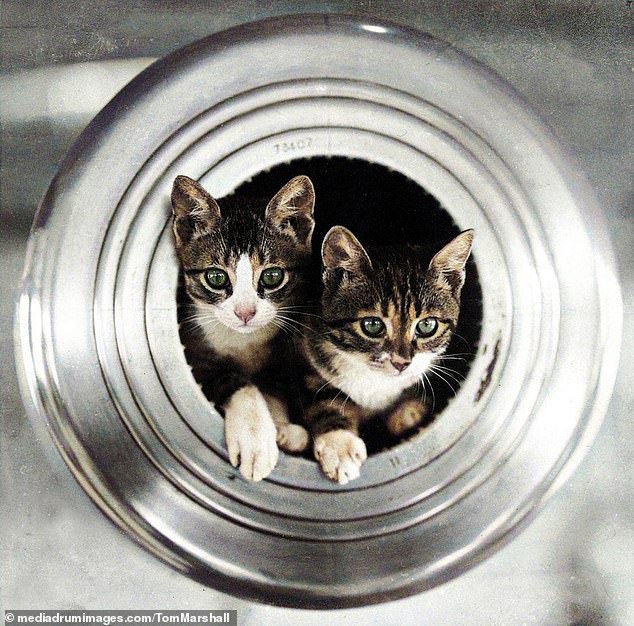
Animals were once common aboard Royal Navy ships before they were banned in 1975. These cats lived aboard HMS Hawkins, a heavy cruiser, and are depicted in the barrel of a 7.5 inch gun.
His appointment note in the United States Navy details his orders.
‘Lt. Commander Ike will be present during daily operations and provide trained support and comfort services. As a trained and certified facility dog, he will provide therapy and stress relief to all USS Wasp sailors and Marines with the utmost dedication,” it said.
“In addition, he will assist in maintaining and increasing the morale and well-being of all units on USS Wasp.”
He is among a number of US Navy troops who joined the Prince of Wales during his deployment, including US Marine Ospreys and fighter jets from an F-35 test squadron.
Hennis said Ike – named after President Dwight D. Eisenhower – loves life at sea.
On HMS Prince of Wales he joins the regular FOD plot, with the crew pacing the cockpit looking for ‘foreign object debris’ that could destroy a jet engine.
And he gets to chase a ball through the enormous hangar below deck.
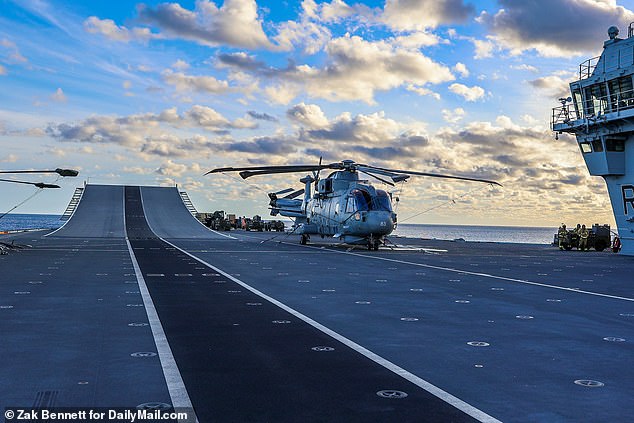
Ike practices in the cockpit and takes part in the daily ‘FOD plod’ when the crew checks for ‘foreign objects’ to protect jet engines
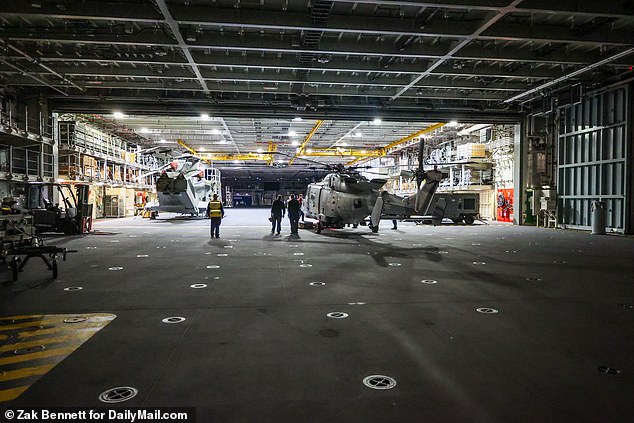
And he gets the chance to play fetch in the enormous airplane hangar below deck
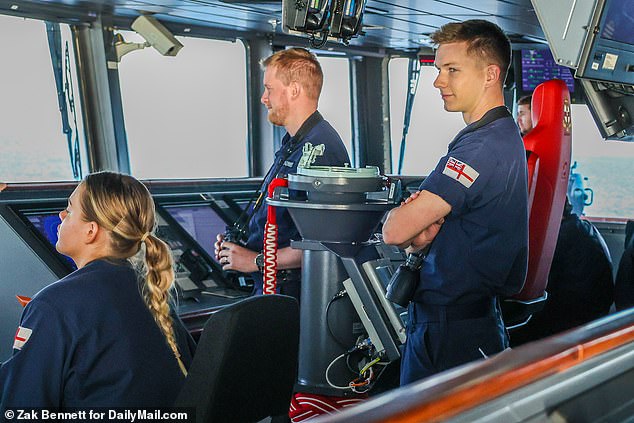
The view from the bridge, from where the ship is controlled

If the bridge is the eyes of the ship, then the Ship’s Control Center is the heart, managing all the systems needed to keep the floating city running
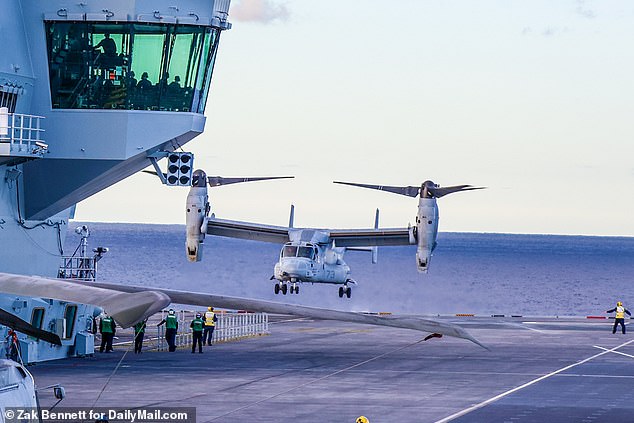
An American MV-22 Osprey, from test squadron HX-21, lands in the cockpit with its unique tilt-rotor design. The tests are all part of expanding the Royal Navy’s capabilities
However, getting down the ship’s ladders is quite a challenge, and Ike and Hennis have developed a special technique.
“What he does is stick his snout in the back of my leg, and as I move one leg forward, he moves one leg forward, and it just stops his momentum so he doesn’t fly down,” Hennis said.
Like other members of the crew, he has a full set of protective equipment: goggles, earmuffs, life jacket and boots.
And he has a permit to roam.
“He goes to meetings all over the ship where we think he would help reduce the stress response or just help people feel better,” Hennis said.
‘Because when you pet a dog, oxytocin is naturally released. And it only helps you feel better.
When he needs a break, he puts his head on her lap.
A piece of artificial grass and an absorbent pad come out.
“He just looks at you, like: I have to go now.”
